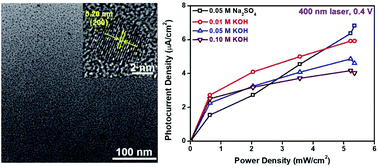Two-dimensional beta-lead oxide quantum dots†
Abstract
In recent years, black-phosphorus-analogue (BPA) two-dimensional (2D) materials have been explored to demonstrate promising optoelectronic performances and distinguished ambient stabilities, holding great promise in practical applications. Here, one new kind of BPA material, orthorhombic β-PbO quantum dots (QDs), is successfully fabricated by a facile liquid phase exfoliation (LPE) technique. The as-prepared β-PbO QDs show a homogeneous distribution of the lateral size (3.2 ± 0.9 nm) and thickness (2.5 ± 0.5 nm), corresponding to 4 ± 1 layers. The carrier dynamics of β-PbO QDs was systematically investigated via a femtosecond resolution transient absorption approach in the visible wavelength regime and it was clarified that two decay components were resolved with a decay time of τ1 = 2.3 ± 0.3 ps and τ2 = 87.9 ± 6.0 ps, respectively, providing important insights into their potential applications in the field of ultrafast optics, nanomechanics and optoelectronics. As a proof-of-concept, β-PbO QDs were, for the first time to our knowledge, fabricated as a working electrode in a photoelectrochemical (PEC)-typed photodetector that exhibits significantly high photocurrent density and excellent stability under ambient conditions.



 Please wait while we load your content...
Please wait while we load your content...